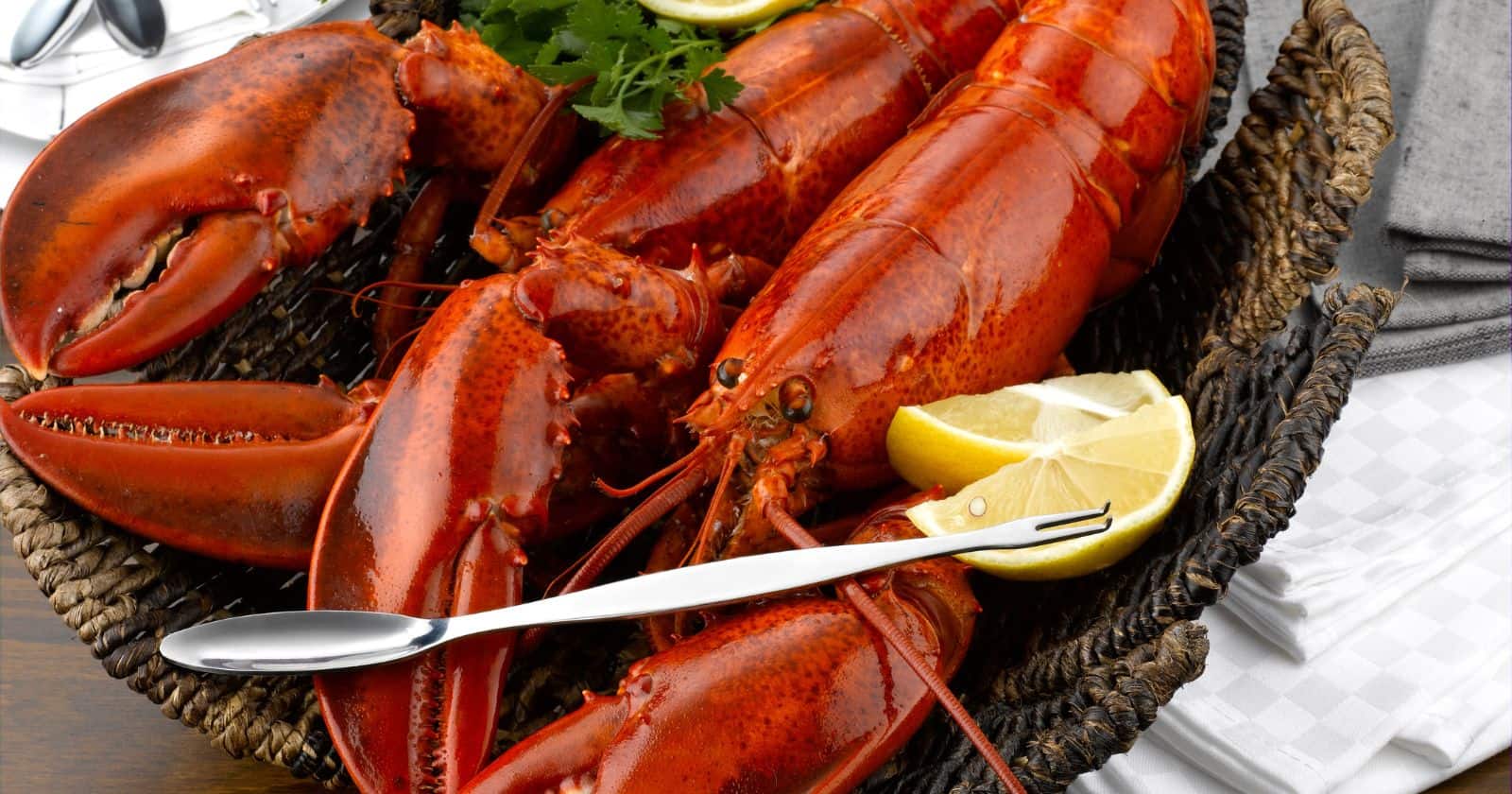Did you know that properly stored cooked lobster can last for 3 to 4 days in the refrigerator, with temperatures between 34 to 40 degrees Fahrenheit? That’s right! You can relish the leftovers of your lobster feast for a few more days.
What’s more, if you’ve removed the meat from the shell, it can stay fresh for up to 4 days in the fridge. However, if you’re looking for even longer preservation, freezing cooked lobster is the way to go.
In the freezer, it will last for several months, ensuring you won’t miss out on delicious lobster flavors during the offseason.
The Shelf Life of Cooked Lobster: How long can cooked lobster last in the refrigerator?
The shelf life of cooked lobster in the refrigerator is typically 3 to 4 days when stored properly. If the lobster meat is removed from the shell, it can extend to four days in the fridge. To ensure optimal storage, it is recommended to store cooked lobster in a shallow airtight container or wrap it tightly in heavy-duty aluminum foil or saran wrap, which helps prevent air exposure.
It is important to remove any excess air from the packaging before sealing it to prevent freezer burn.
When it comes to storing live lobsters, it is best to cook them the day they arrive. However, if needed, live lobsters can be stored for up to two days. To store them properly, wrap the live lobsters in damp paper and keep them with ice packs or in the refrigerator. It’s crucial to keep them as cold as possible, but do not freeze them.
Proper Storage Techniques: Tips for Storing Cooked Lobster
Proper storage techniques for cooked lobster are crucial to maintain its freshness and quality. Follow these tips to ensure your cooked lobster stays delicious:
- Refrigeration: Store cooked lobster in the fridge for 3 to 4 days. Place it in a shallow airtight container or tightly wrap it in heavy-duty aluminum foil or saran wrap to prevent air exposure. This helps to maintain its texture and flavor.
- Extended Refrigeration: If you have removed the meat from the shell, it can stay fresh for up to four days in the fridge. Be sure to store it in an airtight container or wrap it securely to prevent any moisture loss.
- Freezing: To extend the storage life of cooked lobster, freeze it. Place the meat in a heavy plastic freezer bag, ensuring the claws do not puncture the bag. Before freezing, cover the meat with a brine solution to preserve its moisture. This will help prevent freezer burn and maintain the quality of the meat.
When reheating cooked lobster, it is essential to ensure that it reaches a minimum internal temperature of 140-degrees Fahrenheit. Use a digital meat thermometer to verify the temperature for food safety.
Remember, live lobsters are highly perishable, and prompt handling is essential. It is best to cook lobsters the day they arrive, but if needed, they can be stored for up to two days. Wrap them in damp paper and keep them as cold as possible, using ice packs or refrigeration. Avoid freezing live lobsters, as it can negatively impact their quality.
Freezing Cooked Lobster: How to freeze cooked lobster effectively for extended storage.
Freezing cooked lobster effectively is essential for extended storage. To ensure that the lobster maintains its quality, follow these simple steps:
- Remove the meat from the lobster shell: Carefully extract the meat from the lobster’s shell, making sure to remove any shell fragments.
- Divide the meat into smaller pieces: Cut the meat into smaller portions. This not only helps with portion control but also allows for quicker and more even freezing.
- Wrap each piece of meat tightly: Individually wrap each piece of lobster meat tightly in plastic wrap or aluminum foil. This will protect it from freezer burn and keep it fresh during storage.
- Use an airtight container or freezer bag: Place the wrapped lobster meat pieces in an airtight container or freezer bag. This will further prevent freezer burn and help maintain the lobster’s flavor.
- Label the container or bag with the date of freezing: To track the freshness of the lobster meat, label the container or bag with the date it was frozen. This will help you keep track of how long the meat has been stored.
- Place the container or bag in the freezer: Put the container or bag in the freezer and ensure it is placed in an area where it won’t get crushed. Freezing the lobster meat as quickly as possible will help retain its quality.
While cooked lobster can be frozen for up to six months, it is important to note that its texture and taste may be affected. It is best to consume the lobster meat as soon as possible after thawing for optimal flavor. When thawing frozen cooked lobster, it is recommended to thaw it in the fridge overnight. Avoid thawing it at room temperature or in hot water, as this can lead to bacterial growth and spoilage.
Signs of Spoilage: Indicators of spoilage in cooked lobster and how to identify them
Cooked lobster can spoil quickly, leading to potential foodborne illness. It is crucial to be able to recognize the signs of spoilage to ensure your safety. Here are some indicators of spoilage in cooked lobster and how to identify them:
- Discoloration: Any discoloration in the meat is a clear sign that the lobster has gone bad. Look out for gray or yellow meat, as well as patches of green or white coloration.
- Soft consistency: If the lobster meat feels soft or mushy, it is a strong indication that it has spoiled. Freshly cooked lobster should have a firm and springy texture.
- Foul odor: Pay attention to the smell of the lobster. A pungent odor, especially an ammonia-like smell, is a definite sign that the lobster has gone bad. Freshly cooked lobster should not have an unpleasant smell.
- Cottage cheese-like texture: If the meat has a cottage cheese-like texture, it is another sign that it has gone bad. Fresh lobster meat should be smooth and tender.
- Consume immediately: Cooked lobster should ideally be consumed immediately after cooking. This reduces the risk of spoilage and ensures the best flavor and texture.
- Refrigeration: If you have leftover cooked lobster, store it in the refrigerator as soon as possible. However, keep in mind that the meat should be removed from the shell before refrigeration. Lobster meat in the shell can be stored in the fridge for two to three days, while meat removed from the shell should be consumed within one to two days.
By being vigilant and attentive to these indicators of spoilage, you can avoid consuming spoiled lobster and protect yourself from potential foodborne illnesses. If you notice any of the above signs, it is best to discard the lobster to ensure your safety.
Safety Guidelines: Important precautions to take when consuming cooked lobster to ensure food safety.
To ensure food safety when consuming cooked lobster, it is important to follow certain precautions. Here are some guidelines that you should keep in mind:
Proper hygiene practices:
Always wash your hands thoroughly with hot soapy water before and after handling raw seafood and meat.
Before cooking, rinse the lobster under cold water to remove any dirt or debris.
Storage and refrigeration:
After cooking, promptly refrigerate lobsters in airtight containers for up to three days if you are not planning to consume them immediately.
If you have removed the meat from the shell, it can last for up to four days in the refrigerator.
Alternatively, you can freeze cooked lobster meat for future use. Make sure to store it properly to maintain its quality.
Proper reheating:
When reheating cooked lobster meat, use a digital meat thermometer to ensure that the meat reaches a temperature of at least 140-degrees Fahrenheit. This helps to kill any bacteria that might be present.
Avoid improper storage:
Do not store live lobsters in sealed plastic bags, fresh or salt water, your freezer, or plastic bags. It is also important not to let them sit in melted ice.
The best way to keep live lobsters alive for up to 24 hours is to store them with damp newspaper or fresh seaweed in the coldest part of the refrigerator. Keep them in a loose paper bag or in the shipping container.
Extended Storage: Exploring the option of freezing cooked lobster for longer-term storage.
Cooked lobster can be frozen to extend its shelf life, allowing you to enjoy this delicious seafood delicacy at a later time. Freezing cooked lobster requires proper preparation and packaging to maintain its quality. Here are some tips on how to freeze cooked lobster:
- Pick the meat from the shell: If you only want to freeze the meat, carefully remove it from the lobster tail and claws. You can also collect the meat from the lobster body, but remember to discard the green-colored liver and pancreas, known as “tomalley,” before freezing.
- Wrap the lobster: To protect the lobster during freezing, wrap the whole lobster or lobster portions in moisture-vapor resistant wrapping. Heavy-duty aluminum foil or freezer bags are suitable options. Make sure to squeeze out as much air as possible to prevent freezer burn.
- Cover with liquid: To help the lobster maintain its moisture in the freezer, cover it with milk or cream. This additional liquid will help preserve the texture and taste of the lobster when thawed.
Once you have prepared the lobster for freezing, it’s important to label the package with the date and contents. Store the frozen lobster at a temperature of 0°F (-18°C) or lower for optimal preservation. Frozen lobster meat that has been packed correctly can maintain its quality for 3-6 months at these temperatures.





